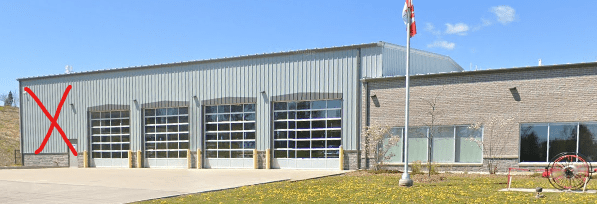Hey guys,
Working in a post disaster category steel portal frame building in Ontario, Canada. We're adding some misc metals to the building which was erected about 10 years ago. While on site and while looking through the drawings, I like to imagine load paths. The building contains portal frames for the LFRS in one direction (N-S) and solid rod cross bracing for the orthogonal direction (E-W). The cross bracing is in a single bay and it's the end bay. There's also cross bracing in one bay in the roof of the building which is adjacent to the vertical cross bracing. Check out the two pictures below.
[URL unfurl="true"]https://res.cloudinary.com/engineering-com/image/upload/v1719430994/tips/IMG_5895_x7mc0f.heic[/url]
[URL unfurl="true"]https://res.cloudinary.com/engineering-com/image/upload/v1719431009/tips/IMG_5896_nuzyqv.heic[/url]
Here's the part I'm trying to wrap my head around. Only the last two bays have an HSS eaves beam tying together the tops of the columns of the portal frames. I can see that these eaves beams are transferring the load from the roof bracing into the vertical bracing. I would think that the eaves beam in the first bay would also be in compression and transfer wind forces on the exterior wall into tension for the cross brace. What I don't understand is why there isn't an eaves beam in every single bay if only one bay is cross braced? I.e. what happens when wind blows on the East wall? Could the masonry walls of the building with the lower roof be used for the LFRS?

Thanks for following along with my ramblings. Any insight is greatly appreciated.
Working in a post disaster category steel portal frame building in Ontario, Canada. We're adding some misc metals to the building which was erected about 10 years ago. While on site and while looking through the drawings, I like to imagine load paths. The building contains portal frames for the LFRS in one direction (N-S) and solid rod cross bracing for the orthogonal direction (E-W). The cross bracing is in a single bay and it's the end bay. There's also cross bracing in one bay in the roof of the building which is adjacent to the vertical cross bracing. Check out the two pictures below.
[URL unfurl="true"]https://res.cloudinary.com/engineering-com/image/upload/v1719430994/tips/IMG_5895_x7mc0f.heic[/url]
[URL unfurl="true"]https://res.cloudinary.com/engineering-com/image/upload/v1719431009/tips/IMG_5896_nuzyqv.heic[/url]
Here's the part I'm trying to wrap my head around. Only the last two bays have an HSS eaves beam tying together the tops of the columns of the portal frames. I can see that these eaves beams are transferring the load from the roof bracing into the vertical bracing. I would think that the eaves beam in the first bay would also be in compression and transfer wind forces on the exterior wall into tension for the cross brace. What I don't understand is why there isn't an eaves beam in every single bay if only one bay is cross braced? I.e. what happens when wind blows on the East wall? Could the masonry walls of the building with the lower roof be used for the LFRS?

Thanks for following along with my ramblings. Any insight is greatly appreciated.
